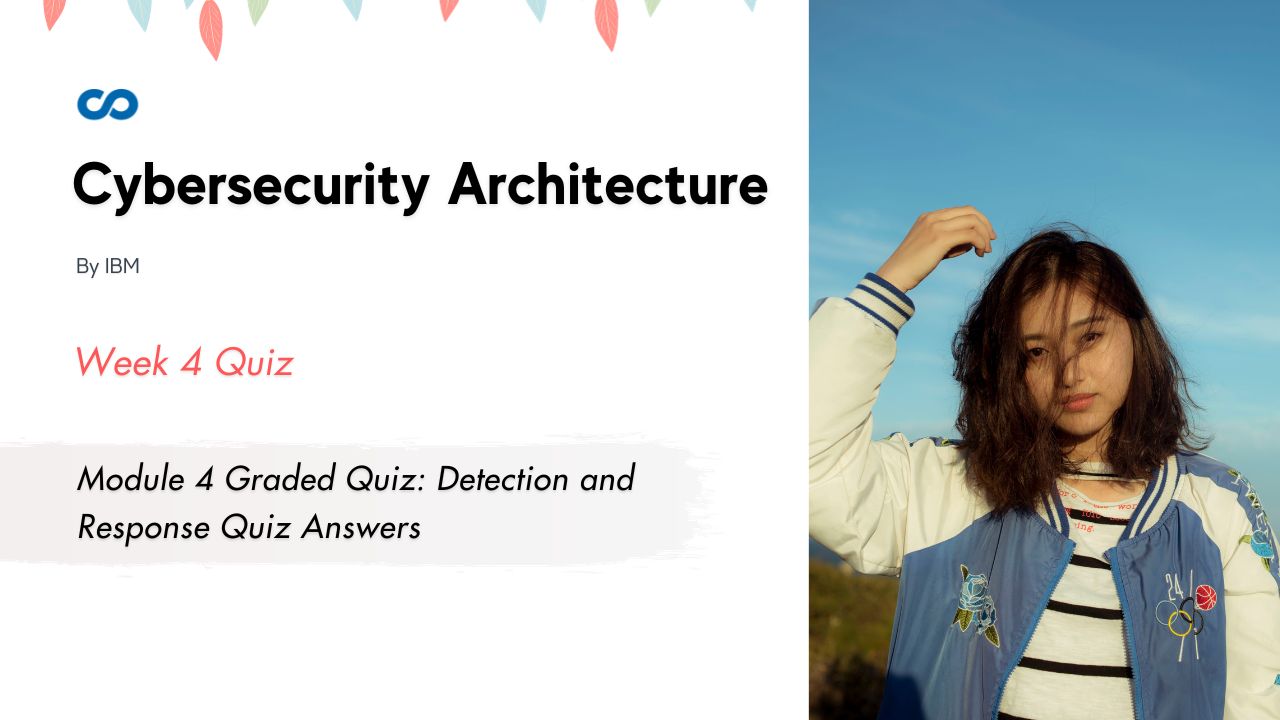Module 4 Graded Quiz: Detection and Response Quiz Answers
In this article i am gone to share Coursera Course: Cybersecurity Architecture by IBM | Week 4 | Module 4 Graded Quiz: Detection and Response Quiz Answers with you.
Enrol Link: Cybersecurity Architecture
Module 4 Graded Quiz: Detection and Response Quiz Answers
Question 1)
What is SIEM?
- A type of antivirus software.
- A system that allows us to monitor, analyze, and report on what happens in our environment.
- A database management system.
- A messaging app for the team.
Question 2)
What is XDR?
- A type of encryption method.
- A system that allows us to conserve data and only fetch necessary information when needed.
- A machine learning algorithm.
- A productivity tool.
Question 3
What is the primary purpose of threat hunting in cybersecurity?
- To identify and fix software bugs.
- To ensure that firewalls are up to date.
- To repair damaged systems.
- To be proactive and detect possible threats before triggering an alarm.
Question 4)
What tools does a threat hunter typically use to search for indicators of compromise?
- Website builders
- SIEM and XDR tools
- Debugging tools
- Photo editing tools
Question 5)
What is the main advantage of using both SIEM and XDR?
- They have an easy-to-use interface.
- They complement each other and form part of a more robust security response.
- They provide free storage space.
- They help in creating responsive web pages.
Question 6)
What is the role of a cybersecurity analyst in threat hunting?
- They develop a hypothesis based on their experience and instincts about potential threats.
- They develop software to combat threats.
- They install and update antivirus software.
- They maintain the server infrastructure.
Question 7)
What benefit does early detection in threat hunting provide?
- It enables automatic system updates.
- It helps to fix software bugs.
- It moves the awareness of an attack back earlier into the attack scenario timeline.
- It enhances server performance.
Question 8)
What is the primary difference between a SIEM and an XDR?
- A SIEM is less expensive as compared to an XDR.
- A SIEM and XDR have the same function.
- A SIEM collects all data and raises alarms when necessary, while an XDR leaves most data local and fetches it when requested.
- An XDR requires more operators than a SIEM.
Question 9)
What is threat hunting?
- It refers to the process of being proactive, developing hypotheses, and looking for indicators of compromise.
- It refers to the process of physically tracking down cyber criminals.
- It refers to a reactive process following a SIEM or XDR alarm.
- It refers to removing threats once they have been identified.
Question 10)
What is the mean-time-to-identify (MTTI)?
- It is the time delay until we know an attack has occurred.
- The total time from when an attack happens until the problem is fully recovered.
- It is the time it takes to prevent an attack.
- It is the time it takes to fix a problem once it has been identified.

